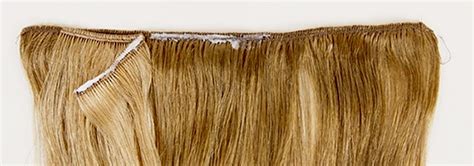Introduction
Hair extensions are a versatile and popular way to enhance volume, length, and style. Adhesive-based extensions offer a convenient and effective method of attachment, providing a secure and long-lasting hold. Understanding the different adhesives available and proper application techniques is essential for achieving the best results and maintaining the health of your natural hair.

Adhesives for Hair Extensions
There are several types of adhesives used in hair extensions, each with its unique properties and applications.
Keratin Adhesives
Keratin is a natural protein found in hair and nails. Keratin-based adhesives are applied to the base of the extension strands and then bonded to your natural hair using heat. The heat-activation process creates a strong and flexible bond that mimics the structure of your own hair.
Cold Fusion Adhesives
Cold fusion adhesives utilize a chemical reaction to bond hair extensions to your natural hair. They are often made from a blend of polymers and other non-toxic compounds. Cold fusion adhesives are applied to the base of the extensions and then clamped with a special tool, initiating a chemical reaction that forms a strong bond.
Tape-In Adhesives
Tape-in adhesives are pre-applied to the top of the extension wefts. These wefts are then sandwiched between your natural hair and secured with a rolling motion. Tape-in adhesives are typically made from a silicone-based material that provides a comfortable and flexible hold.
Glue-Based Adhesives
Glue-based adhesives are strong and permanent adhesives that create an extremely durable bond. They are often used for permanent hair extensions or in cases where extreme hold is required. Glue-based adhesives typically require a longer curing time and may be more difficult to remove.
Choosing the Right Adhesive
Selecting the appropriate adhesive for your hair extensions depends on various factors, including:
- Hair Type: Different adhesives may be more suitable for specific hair types, such as fine hair or coarse hair.
- Desired Hold: Consider the level of hold you require, whether it’s for temporary or permanent wear.
- Sensitivity: Some adhesives may contain ingredients that can irritate sensitive skin. Choose hypoallergenic or medical-grade adhesives if necessary.
- Professional Application: Certain adhesives require specialized equipment and techniques. Consider seeking professional assistance if you lack experience.
Proper Application Techniques
Applying hair extensions requires meticulous attention to detail. Here are the general steps for adhesive-based extensions:
- Prepare Your Hair: Wash and dry your hair thoroughly to remove any oils or products that may interfere with adhesion.
- Divide Your Hair: Section off your natural hair to create small areas for extension application.
- Apply Adhesive: Use the appropriate adhesive and application method for your chosen extensions.
- Attach Extensions: Carefully place the extensions onto your natural hair and secure them according to the specific adhesive instructions.
- Blend Extensions: Brush and style your hair to seamlessly blend the extensions with your natural hair.
Maintenance and Removal
Proper maintenance is crucial for ensuring the longevity of your hair extensions and protecting your natural hair.
Maintenance
- Regular Brushing: Brush your hair gently with a wide-tooth comb to avoid tangling or shedding.
- Wash and Condition: Use sulfate-free shampoos and conditioners to clean and nourish your hair and extensions.
- Avoid Heat Styling: Excessive heat can weaken the adhesive bond. Limit heat styling to medium or low settings.
Removal
- Professional Removal: Professional removal by a hairstylist is recommended to ensure the safe and proper removal of extensions.
- Home Removal: If attempting home removal, use a specialized adhesive remover and follow the manufacturer’s instructions.
- Avoid Harsh Chemicals: Do not use harsh chemicals or tools to remove extensions, as this may damage your natural hair.
Common Mistakes to Avoid
- Using the Wrong Adhesive: Choosing an inappropriate adhesive can result in hair damage or poor hold.
- Overapplying Adhesive: Excessive adhesive can lead to a bulky and unnatural appearance.
- Applying Adhesives to Your Roots: Avoid applying adhesives directly to your scalp to prevent irritation and hair breakage.
- Improper Application: Incorrect application techniques can weaken the bond and cause extensions to fall out.
- Insufficient Maintenance: Neglecting proper maintenance can compromise the longevity and appearance of your hair extensions.
Conclusion
Adhesive-based hair extensions offer a versatile and effective method of achieving your desired hair goals. By understanding the different adhesives, choosing the right option, and following proper application and maintenance techniques, you can enjoy beautiful, healthy, and long-lasting hair extensions. Remember to consult with a professional hairstylist for personalized guidance and professional application.
